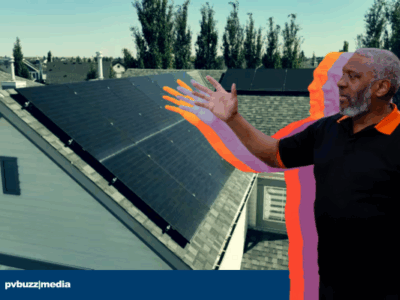To improve the management of fluctuations in the electricity supplied by solar and wind installations, the electricity network needs to work more intelligently in the future. Electricity suppliers aim to be able to regulate consumption on the basis of supply with the help of an intelligent electricity network, a smart grid. Intelligent electricity meters developed for such a system would be able to switch electrical devices on and off.
Researchers from the Max Planck Institute for Dynamics and Self-Organization have now shown that intelligent electricity meters can match electricity demand and supply decentrally and on an entirely self-organised basis. Up to now, electricity suppliers worked on the assumption that they would need to collect consumption data centrally and also centrally coordinate electricity demand and supply.
This makes the electricity supply vulnerable to hacker attacks and also raises data protection issues – problems that do not arise with a fully decentral solution of the Max Planck researchers. Decentral control also relaxes the need for the complex design of the vast communications infrastructure that would be required to connect millions of electricity meters with the major energy suppliers in future.
 Decentrally organised electricity supply: According to a study carried out by researchers from the Max Planck Institute for Dynamics and Self-Organization, electricity control devices, so-called smart meters, can tailor the electricity supply from nuclear power plants and wind farms to the demand from industry and households based on a self-organised process. The study also takes into account whether the electricity is available in stored form, for example in batteries, or whether it has free storage capacity. Credit: Benjamin Schäfer / MPI for Dynamics and Self-Organization
Decentrally organised electricity supply: According to a study carried out by researchers from the Max Planck Institute for Dynamics and Self-Organization, electricity control devices, so-called smart meters, can tailor the electricity supply from nuclear power plants and wind farms to the demand from industry and households based on a self-organised process. The study also takes into account whether the electricity is available in stored form, for example in batteries, or whether it has free storage capacity. Credit: Benjamin Schäfer / MPI for Dynamics and Self-Organization
The use of renewable energy sources is growing rapidly. For instance, since early 2014, the feed-in from renewable energy sources has reached over 28 percent of electricity consumption in Germany – a new, all-time high. However, with the rise of solar and wind installations, fluctuations in the electricity network are also on the rise. When a cloud front covers South Germany, there is an abrupt dip in the amount of electricity supplied by the solar power plants. And when a storm approaches, electricity production in the wind parks increases suddenly and fluctuates even more than usual. Such fluctuations do not arise in the traditional electricity network, as the generators in the coal-fired power stations and remaining nuclear power stations chug along regularly day in day out, providing a constant supply of electricity.











Comments